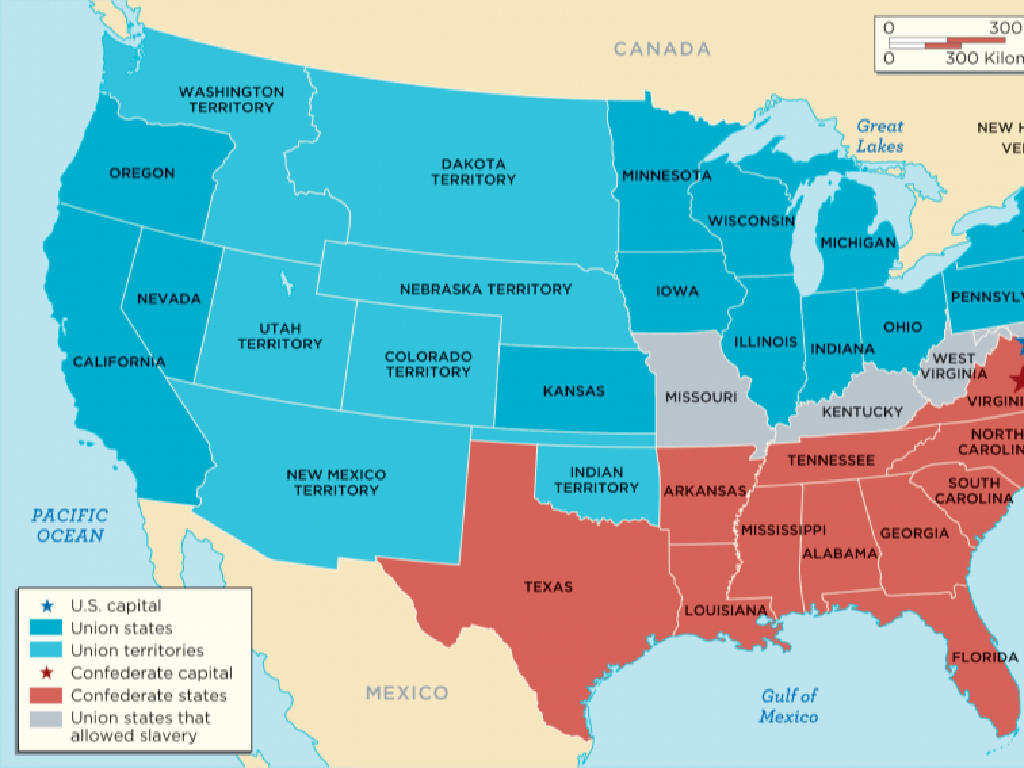Antebellum Immigration
Subject: Social studies
Grade: Eighth grade
Topic: The Antebellum Period
Please LOG IN to download the presentation. Access is available to registered users only.
View More Content
Welcome to Antebellum America: Immigration
– Antebellum Period overview: 1820-1860
– A time of significant transformation before the Civil War.
– Social and economic changes
– Industrialization and urbanization altered lifestyles.
– Surge in immigration
– Immigrants from Europe and Asia arrived in large numbers.
– Impact on American society
– Immigrants influenced culture, workforce, and politics.
|
The Antebellum Period was a pivotal era in American history, marked by rapid industrialization and urbanization, which led to significant social and economic changes. During this time, there was a substantial increase in immigration, with many people arriving from Europe and Asia seeking new opportunities. This influx of immigrants played a crucial role in shaping American society, contributing to the cultural mosaic, expanding the labor force, and influencing political dynamics. As we explore Antebellum immigration, consider the push and pull factors that led to these migration patterns and the resulting effects on the United States.
Exploring Antebellum Immigration
– Define ‘Antebellum’ period
– ‘Antebellum’ refers to pre-Civil War era, roughly 1820-1860.
– Immigration for new opportunities
– Many sought freedom, jobs, and land in the U.S.
– Immigrants’ roles in society
– Immigrants worked in factories, built railroads, and farmed.
– Impact on Antebellum America
– Their contributions shaped the economy and culture.
|
This slide introduces students to the concept of Antebellum immigration, setting the stage for understanding the period before the American Civil War when many immigrants arrived in the United States. Emphasize the term ‘Antebellum’ and its time frame to provide historical context. Discuss the various reasons immigrants came to America, such as economic opportunities and freedom, and explore the diverse roles they played in society. Highlight how their work in various sectors contributed to the growth of the nation. Encourage students to consider the lasting impacts of this era on modern American society. This discussion will help students appreciate the complexities of immigration during a pivotal time in U.S. history.
Push & Pull Factors in Antebellum Immigration
– Define ‘push’ & ‘pull’ factors
– Forces that drive people away or attract them to a new country
– Examples of push factors
– Famine, war, persecution leading to emigration
– Examples of pull factors
– Economic opportunity, freedom, land enticing immigrants
– Impact on immigration patterns
– These factors shaped the flow of people during the Antebellum period
|
This slide aims to explain the concept of push and pull factors that influenced immigration during the Antebellum period. Push factors are conditions that drive people to leave their home countries, such as famine, war, and persecution. Pull factors are the appealing aspects of a destination country that attract immigrants, including economic opportunities, political and religious freedom, and available land. Understanding these factors provides insight into the motivations behind the movement of populations and the shaping of American society during this era. Encourage students to think of modern examples of push and pull factors to connect the historical context to the present day.
Life as an Immigrant During the Antebellum Period
– Challenges upon arrival
– Language barriers, discrimination, and job scarcity
– Immigrant life: work and living
– Jobs in factories/railroads, tenement housing, ethnic neighborhoods
– Building communities
– Formation of support networks, churches, and cultural societies
– Immigrants’ contributions
– Influences on cuisine, language, and labor growth
|
This slide aims to provide students with a comprehensive understanding of the immigrant experience during the Antebellum period. Discuss the initial challenges immigrants faced, such as language barriers, discrimination, and difficulty finding work. Highlight the typical jobs immigrants took, their living conditions, and how they formed tight-knit communities for support. Emphasize the positive impact immigrants had on American culture and economy, including the introduction of new cuisines, words, and significant contributions to the labor force. Encourage students to consider how these historical experiences compare to modern immigration issues.
Case Study: Irish & German Immigrants
– Irish Potato Famine migration
– A devastating crop failure forced many Irish to America for survival.
– German political refugees’ arrival
– Germans fled political unrest, seeking freedom and opportunity in the U.S.
– Immigrants adapting to America
– Stories of resilience: how Irish and German communities established new lives.
– Cultural impact on American society
– Contributions to American culture: traditions, foods, and languages introduced.
|
This slide delves into the reasons behind the mass migration of Irish and German immigrants to America during the Antebellum period. The Irish Potato Famine was a catastrophic event that led to a significant influx of Irish immigrants, while political turmoil in Germany prompted many Germans to seek refuge in the United States. Discuss how these groups adapted to their new environment, the challenges they faced, and the communities they built. Highlight the lasting impact these immigrant groups had on American society, including the enrichment of American culture through their diverse traditions, cuisines, and languages. Encourage students to consider how these historical events relate to current discussions on immigration and cultural integration.
Nativism and Anti-Immigrant Sentiment
– Define Nativism in the Antebellum period
– Nativism favored native-born individuals over immigrants for jobs and political influence.
– Examples of anti-immigrant sentiment
– Signs, cartoons, and laws that discriminated against immigrants, like the Irish and Germans.
– The Know-Nothing Party’s role
– A political group that aimed to limit immigration and naturalization.
– Impact of nativism on policies
– Nativist ideas led to restrictive laws affecting immigrant rights and opportunities.
|
This slide delves into the concept of nativism, which emerged strongly during the Antebellum period as a reaction to the surge in immigration. It’s crucial to explain the definition of nativism and discuss the underlying reasons for its rise, such as economic competition and religious differences. Provide tangible examples of anti-immigrant sentiment, such as propaganda and legislation that targeted immigrant communities. Discuss the Know-Nothing Party as a significant political force that sought to curb immigration and the rights of immigrants. Highlight how these nativist attitudes influenced policies and the social climate of the time. Encourage students to consider the long-term effects of these sentiments on American society and to draw parallels with modern issues of immigration.
Reflections on Antebellum Immigration
– Immigration’s impact on the Antebellum era
– Immigrants influenced culture, economy, and politics.
– Compare historical and current immigration
– Issues like assimilation and discrimination persist.
– Antebellum immigrants’ enduring legacy
– Contributions to American society and culture.
|
This slide aims to reflect on the significant role immigration played during the Antebellum period and its lasting effects on American society. Discuss how the influx of immigrants during the 1800s shaped the cultural, economic, and political landscape of the time. Draw parallels between the challenges faced by immigrants then and now, such as assimilation into society and discrimination. Highlight the enduring legacy of Antebellum immigrants, noting how their contributions have become woven into the fabric of American identity. Encourage students to think critically about how the history of immigration informs current debates and policies.
Class Activity: Immigration Diary
– Imagine being an Antebellum immigrant
– Write a diary entry of your first day
– Describe the voyage, arrival, and initial feelings
– Compare past and present immigrant experiences
– Consider laws, attitudes, opportunities then and now
– Reflect on the journey and adaptation
– How did you adapt? What challenges did you face?
|
This activity is designed to help students empathize with the experiences of Antebellum immigrants and compare them with those of immigrants today. Students should choose a country of origin and a reason for their immigration, such as famine, political unrest, or seeking new opportunities. They will write a diary entry detailing their first day in America, focusing on their emotions, observations, and challenges. Encourage them to research the era to make their entries authentic. After writing, facilitate a class discussion on how the historical experiences of immigrants might align or differ from those of modern immigrants, considering changes in laws, societal attitudes, and available opportunities. This will help students develop a deeper understanding of immigration patterns and the factors influencing them.





